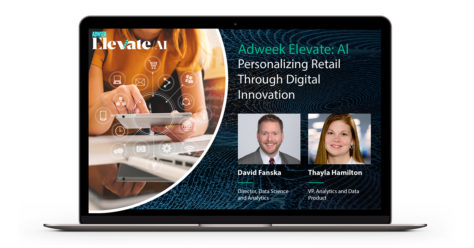7 Tips to Strengthen Your Brand’s Influencer Marketing
Influencer marketing offers brands authentic ways to tell stories and showcase their products through personalities consumers know and trust. But now more than ever, navigating the sea of rapidly evolving social media trends and guidelines requires the right tactics to be successful.
We spoke with Quotient’s Manager of Influencer Relations Megan Dobberteen to get her latest tips brands can use to make the most of their next influencer campaign.
1. The Smaller the Following, the More Engaged the Audience
In my experience, I’ve noticed that small followings tend to translate into higher engagement rates for influencers. That plays into the authenticity that people like to talk about in influencer marketing. With micro influencers—who typically have fewer than 100,000 followers—I think their audiences tend to be more invested because they feel like that influencer is someone they can connect with instead of viewing them as an unattainable celebrity.
From an advertiser’s perspective, micro influencers also tend to be really excited about working with brands—whether it’s a brand that is new to them or a product that’s fresh on the market. They want to share their discoveries with their followers, and that enthusiasm resonates well with consumers. There’s this willingness to explore, and for brands who want new people to try their products, it’s cool that an influencer would want to be in that demographic.
2. Be Willing to Change Your Approach When It Comes to Video
Many brands want to manufacture the viral success that organic content is seeing on TikTok, but it’s important to recognize that TikTok does not operate the same way as other short-form video platforms like Instagram or Snapchat. There’s almost this reverse form of sponsorship on TikTok right now in which brands are being tagged in videos after they have gone viral with a creator using their product.
Realistically, brands also can’t move as quickly as individual creators. A lot of TikToks go viral when they incorporate a popular sound. But if that same sound is part of a sponsored campaign that can take weeks to get approved, there’s a good chance that sound will no longer be relevant by the time the campaign is ready to go live. Brands have to ask themselves how quickly they're willing to work to create a presence on TikTok? Everyone is learning about short-form video at the same time, so being willing to adapt and experiment is helpful.
3. Embrace Relatability to Reach New Consumers
A key benefit of influencer marketing is that it allows consumers to see people who are similar to them using a product—it allows them to envision the product in real life. Brands should embrace this relatability when planning out their campaigns. Think about shopping online for clothes. You’d want to see someone with your body type wearing the outfit. It makes it easier for shoppers to picture themselves buying that product and using it in their day-to-day lives.
There’s also an element of aspiration with influencer marketing. If that influencer is someone who people admire or are striving to become, they can act as a test subject and introduce consumers to products that they might not have known about or purchased for themselves.
4. Have a Clear Vision … But Not Too Clear
It’s important to have a clear vision without being restricting. If a brand’s expectations are too vague, there’s a chance they might not get what they’re looking for or the influencer will have to go through additional edits. But brands should also allow influencers to have a level of creative freedom. The reason advertisers work with influencers is because they have specific style and audience that the brand wants, and that influencer knows how best to reach those consumers. Advertisers should provide a clear picture of their expectations without being so constraining as to treat the influencer like a photography studio.
5. When Selecting Influencers, Look Beyond Demographics
Many times, brands know the type of influencer they want—like a mom with kids or someone who shops at a specific store. That kind of demographic information is helpful, but brands should also put some thought into characteristics that inform how the photography would be shot. Do they want a playful, laid-back style or a sophisticated one? By focusing more on personality and aesthetic, brands can move beyond things like shopper data and audience demographics.
6. Diversity Opens the Door to More Connections
Another key benefit of working with micro influencers is that brands can choose to work with multiple creators within the scope of one campaign. And because diversity is so important, being able to work with multiple influencers means that brands can resonate with people who fall into many different categories instead of finding one specific influencer who meets all their criteria.
From an audience perspective, if brands want to reach a wide range of shoppers, then it’s good to work with a spectrum of influencers who can connect with those people. For example, instead of partnering with a single influencer who has 50,000 followers, a campaign could incorporate five different influencers with 10,000 followers each to reach a broader set of consumers.
7. Point to Specific Examples When Selecting Influencer Partners
Finally, one tip that I always recommend is, when reviewing an influencer’s Instagram or blog, if there’s a specific post or example that you want your content to emulate, share it with the influencer. There’s a lot of variety in the way that one influencer shoots their content, so if you can show them a specific example of why you want to work together, that helps set the expectation for the influencer while also giving the brand a clearer vision of what to expect.
______________
We hope these recommendations help you find success with your next influencer marketing campaign. For more information on Quotient’s data-driven approach to social media, explore our social platform or contact us at communications@quotient.com.










